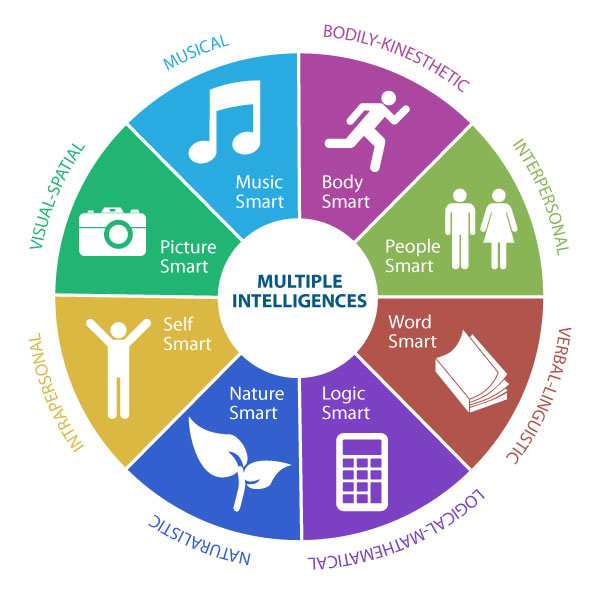Multiple Intelligence: a brief introduction

What is intelligence?
- The ability to perform tasks quickly.
- The ability to reason well and solve problems more readily.
- The ability to handle complexity.
- The ability to adapt to new environmental demands and to shape environments.
Gifted behaviour
Renzulli's Three-Ring Model defines giftedness as the intersection of three key traits:
- Above-Average Ability: Intellectual, creative, or specific talent in a domain.
- Creativity: Original thinking, problem-solving, and innovative ideas.
- Task Commitment: Motivation, perseverance, and dedication to a task.
Unlike traditional IQ-based definitions, Renzulli’s model emphasizes that giftedness emerges when these three traits interact, highlighting the importance of both potential and effort rather than innate intelligence alone.

The limitation of traditional IQ tests
Traditional IQ tests have several limitations, including cultural bias, as they often reflect the knowledge and values of dominant societies, disadvantaging individuals from different backgrounds. They primarily measure specific cognitive abilities like logic and memory but overlook other forms of intelligence, such as emotional, creative, or practical skills. IQ scores can be influenced by factors like test anxiety, education level, and socioeconomic status, which may not accurately reflect true intellectual potential. IQ scores also fail to account for its dynamic and evolving nature over time due to its static measure of intelligence.
A Changing concept: moving pass IQ tests
Today, research recognizes giftedness as multifaceted - encompassing diverse strengths beyond traditional metrics. This evolving view prioritizes nurturing potential through tailored education, acknowledging that giftedness is complex, context-dependent, and developable over time.

Multiple Intelligence
Howard Gardner suggests that intelligence is not a single, fixed trait but a diverse set of abilities. He identified 8 distinct intelligences, emphasizes that individuals have unique strengths and learning styles, challenging traditional education systems that prioritize only logical and linguistic skills. By recognizing and nurturing different intelligences, we can create more inclusive and effective teaching methods, helping students thrive in their own ways.
